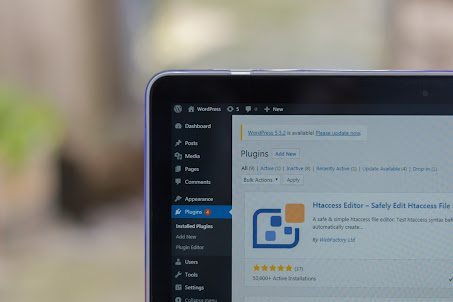Beyond Keywords: Semantic SEO for WordPress Web Design
Introduction
In the ever-evolving world of SEO (Search Engine Optimization), staying ahead of the curve is essential. With search engine algorithms becoming increasingly sophisticated, ranking your WordPress website based solely on keywords is no longer enough. Enter Semantic SEO, a game-changing approach that focuses on context, user intent, and the broader meaning of content. In this blog, we'll explore the world of Semantic SEO and how it can transform your WordPress web design.
The Power of Semantic SEO
Semantic SEO is all about understanding the relationships between words and concepts to provide a richer search experience for users. It goes beyond traditional keyword optimization to consider the context, intent, and relevance of content. This approach not only makes your website more search engine-friendly but also enhances the user experience, ultimately driving more organic traffic.
Semantic Markup and Schema
One of the foundational elements of Semantic SEO is structured data markup. Search engines love structured data because it helps them understand the content better. In WordPress, you can use Schema markup to provide context to your content. This can be especially powerful for businesses, events, reviews, recipes, and more.
For example, using Schema markup for a restaurant website can provide details like the type of cuisine, location, hours of operation, and user reviews. This information enriches search engine results and encourages click-throughs from users who are looking for specific details.
Quality Content Is Key
Semantic SEO heavily relies on high-quality, informative, and engaging content. The focus is on creating content that not only includes relevant keywords but also answers questions, addresses user needs, and offers comprehensive information on a given topic. Google's algorithms have become increasingly skilled at recognizing well-structured, valuable content.
Incorporate thorough research into your content creation process. Understand your audience's pain points and questions, and then craft content that delivers real value. Long-form articles, guides, and tutorials that comprehensively cover a topic are often favored by search engines.
User Intent and Natural Language
Google's algorithms are now geared toward understanding user intent. They aim to provide results that best match what a user is trying to find, even if the user didn't use the exact keywords. This means that creating content that addresses different aspects and variations of a topic is critical.
Long-tail keywords and natural language are becoming increasingly important. People often use voice search and conversational language when searching. For your WordPress web design, this means optimizing for these types of queries and ensuring that your content is conversational and informative.
Mobile Optimization
With the growing use of mobile devices, your WordPress web design should prioritize mobile optimization. Sites that are mobile-responsive and load quickly tend to rank higher in search results. Mobile optimization is part of the broader user experience, which search engines value highly.
Conclusion
Semantic SEO is more than a buzzword; it's a fundamental shift in how websites are ranked in search engine results. For WordPress web design, it means focusing on structured data, high-quality content, understanding user intent, and optimizing for mobile. By embracing Semantic SEO, you're not only making your website more search engine-friendly but also providing a better experience for your users. This holistic approach will help your WordPress site rise in the ranks, attract more organic traffic, and stay competitive in the dynamic world of online search.




Comments
Post a Comment